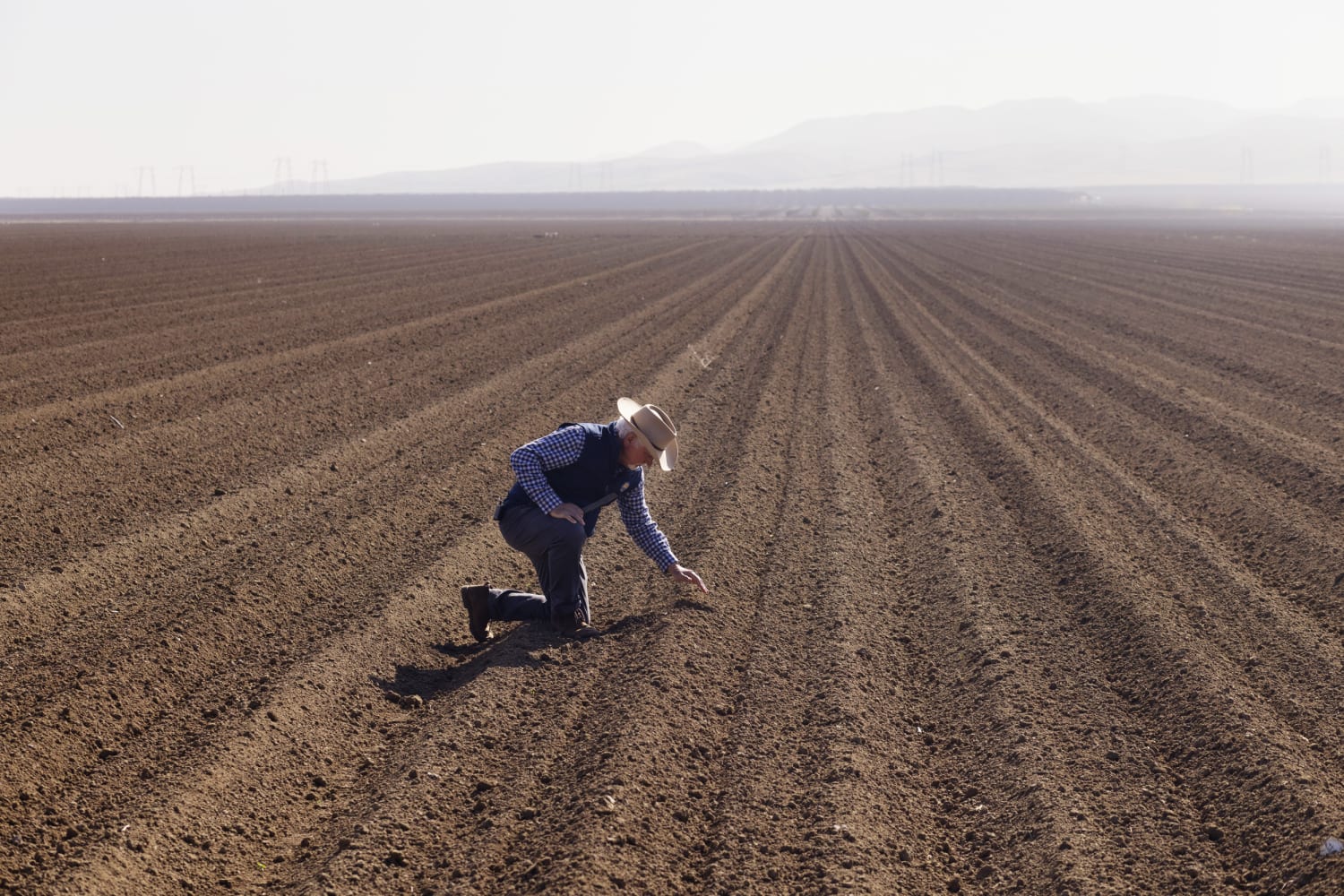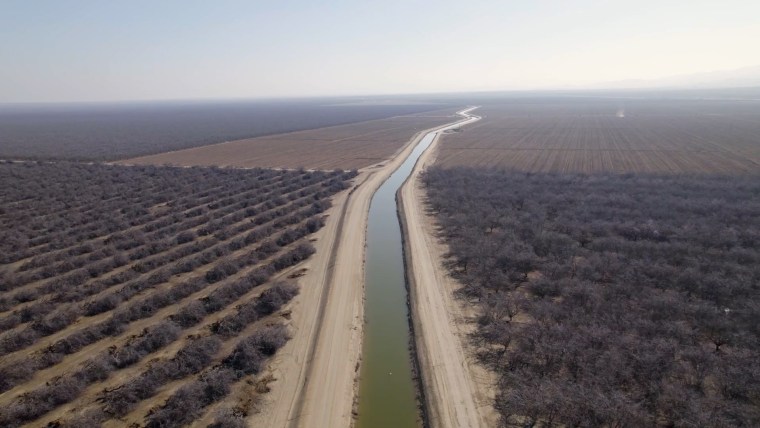FIREBAUGH, Calif. — When Joe Del Bosque bought one of his first few fields 25 years ago, his wife, Maria, nicknamed it “the field of the house.” She hoped the agriculturally rich half-mile stretch of land would make them enough money to buy their first home.
The land allowed them to do that — and more.
Del Bosque, 72, now farms 2,000 acres — including that half-mile he first bought. His vast melon fields are among the country’s most productive, and his almonds are sold around the world.
“It’s been a great journey for me,” Del Bosque said. “Up until now.”
These last couple of years, Del Bosque has felt that his long-term family farming enterprise is under threat.
“I don’t think I’ve ever had so much pressure in all my career as a farmer,” he said, his eyes expressing worry under the brim of his tan cowboy hat. “This isn’t really the way I want my career to end. I want to be able to pass on a thriving, growing farm for our children and grandchildren. It’s looking tougher and tougher and a little more grim every year.”
The field, which Del Bosque has been getting ready for planting since last year, could be uncultivated if his farm doesn’t get enough water this year. That would put 80 to 100 skilled people out of work, a painful reality for longtime farmers in the area like Del Bosque, who have spent the majority of their careers cultivating crops in California’s San Joaquin Valley.
Here in the San Joaquin Valley and the Central and South Coast regions, farming has employed more than 400,000 people each year in the last decade alone, most of them Latinos. For many, it has been several generations’ livelihoods, and it’s a significant part of the state’s annual average employment.
California produces two-thirds of the country’s fruits and nuts and more than a third of its vegetables — among the top valued commodities in 2020 were almonds and grapes.
But fueled by climate change, southwestern North America is experiencing its driest 22-year period — beginning in 2000 — in at least 1,200 years. It’s expected to persist through 2022 and after, according to new research published in the journal Nature Climate Change.
Researchers at the University of California, Merced, estimated that the drought last year cost California’s agriculture industry $1.1 billion, nearly 8,750 full-time and part-time jobs and 385,000 acres of idled land in the Central Valley alone, according to the study.
When Del Bosque was growing up in the area, his life revolved around farm work, picking melons alongside field workers his father managed. When he created his own family-run farm in 1985, he fulfilled his American Dream, he said. Today, several family members depend on the farm to make their livings.
He and Maria, also a farmworker, have six daughters and nine grandchildren. Del Bosque hopes to introduce a few of his grandkids to farming, but he’s losing hope about its viability.
His farm is struggling to cope with a meager water supply as lower yields in crop production and increased worker wages have created tense economic cutbacks. As his farm faces another dry year, he is striving to remain afloat.
Source: | This article originally belongs to Nbcnews.com











